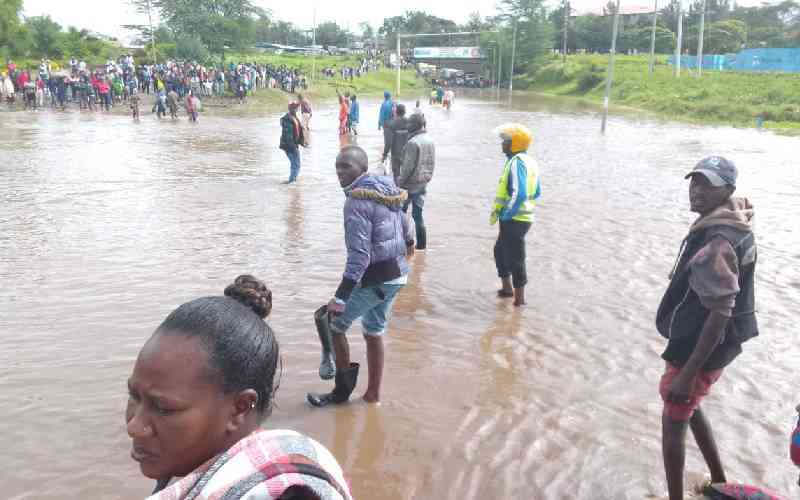A young graduate in search of a bright future will most likely head to a major town or city.
And rightly so. According to a new World Bank report, a country’s economic growth is positively related to urbanisation — which is the increase in the proportion of people living in towns and cities.
However, if badly managed, urbanisation can be a source of slums, congestion and very little economic growth, the report, Kenya Urbanisation Review (KUR), warns.
Currently, about 27 per cent of Kenyans — nearly three in 10 people — live in urban areas. By 2050, the population of urban dwellers is expected to hit 40 million, with the number of those living in urban areas catching up with those living in rural areas.
Kenya has been urbanising at a rate of 4.3 per cent annually, as cities continue to attract such people as young graduates.
According to KUR, this young graduate will largely be attracted to the sprouting urban centres around the Northern Corridor, which connects the Mombasa Port through Malaba, with a branch to Kisumu.
The report says a young graduate will most likely settle in or around Nairobi, Mombasa, Kisumu, Eldoret, Kericho and Nakuru — approximately 35 kilometres within these areas.
But what are the prospects in these burgeoning towns?
The World Bank reports the following realities of life in Kenya’s urban areas for a young man fresh out of college.
1. Housing
A young graduate has a 61 per cent chance of living in an informal settlement.
This means his house will meet the Millennium Development Goals’ definition of a slum, which is a settlement that lacks at least one of the following: running water in a unit or building, permanent walls, and a toilet that is shared by less than 20 people, or sleeping units.
There is also a 62 per cent chance of his living in a one-room unit.
If he settles on Nairobi, there is a nine in 10 chance that he will live in a rental unit rather than own a home for quite some time. However, in Kitui, he has a 61 per cent chance of owning his own home at some point in life.
Also in Nairobi, if he lives in a formal household, he will have an 84 per cent chance of having piped water in the house, compared to a 36 per cent chance should he live in an informal settlement.
Stay informed. Subscribe to our newsletter
His monthly rent in Nairobi, including the costs of water and electricity, shall take up about 30.2 per cent of his income.
And when the time comes that he can finally afford to build his house, it will take him 72 days to register to do so, and this registration will gobble up about 4.3 per cent of the property’s value.
2. Employment
The graduate will have to compete with 5.7 million of his agemates for the paltry 50,000 modern-sector wage jobs that are created annually.
On the upside, he will have a 70 per cent chance of earning more than Sh22,500 a month if he finds a job in the formal sector, compared to just 17 per cent if he lands a job in the Jua Kali sector.
3. Access to Basic Services
The graduate will have a six in 10 chance of accessing safe drinking water in an urban area, and a 50 per cent chance his house will have electricity.
He also has a 70 per chance of disposing of his human waste well, in addition to a 70 per cent chance of having a septic tank and pit latrine, rather than a sewer line.
Unfortunately, he will likely be confronted by garbage dumped in open fields around his home as the country does not have “properly engineered sanitary landfills.”
And should he land a low-paying job, electricity and water will take up 18 per cent and 12 per cent of his income, respectively. For the non-poor, electricity takes up 3.2 per cent of their incomes, and water 2 per cent.
4. Transport
The graduate will most likely compromise on living conditions to remain within a reasonable distance from his job. There is an 80 per cent chance he will use public transport or walk to his work station.
And if he is to get a formal commercial or industrial job, only 11 per cent to 20 per cent of offices can be reached within an hour using these transport modes.
In urban areas, the frequency of vehicle breakdowns and traffic congestion mean that the average commuting speed for personal vehicles and matatus is 14 kilometres per hour (kph) and 13.5 kph, respectively.
[email protected]
 The Standard Group Plc is a
multi-media organization with investments in media platforms spanning newspaper
print operations, television, radio broadcasting, digital and online services. The
Standard Group is recognized as a leading multi-media house in Kenya with a key
influence in matters of national and international interest.
The Standard Group Plc is a
multi-media organization with investments in media platforms spanning newspaper
print operations, television, radio broadcasting, digital and online services. The
Standard Group is recognized as a leading multi-media house in Kenya with a key
influence in matters of national and international interest.
 The Standard Group Plc is a
multi-media organization with investments in media platforms spanning newspaper
print operations, television, radio broadcasting, digital and online services. The
Standard Group is recognized as a leading multi-media house in Kenya with a key
influence in matters of national and international interest.
The Standard Group Plc is a
multi-media organization with investments in media platforms spanning newspaper
print operations, television, radio broadcasting, digital and online services. The
Standard Group is recognized as a leading multi-media house in Kenya with a key
influence in matters of national and international interest.






